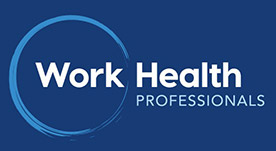Audiometric testing WA – FAQs
What are the new WHS Regs for hearing testing?
In summary the aim of the 2020 WHS Act and subsequent 2022 WHS Regulations, is to ensure that employers are providing suitable risk management processes to minimise the risk of Noise Induced Hearing Loss (NIHL) for their workers.
The main risk management process required by this new legislation is for employers to provide audiometric tests for employees at least every 2 years. This allows for comparison of results to identify any employees who may have a significant change to their hearing ability.
Who can conduct these audiometric tests?
The audiometric test may be conducted by a suitably trained assessor (an Audiometric Officer or Audiometrist) on specifically calibrated test equipment. Work Health Professionals (WHP) meets these important audiometric testing requirements and has years of experience conducting onsite assesments.
How to read audiometric test results?
Once a worker’s audiometric tests are conducted more than once, results can be compared from one period to another to identify any significant changes in hearing threshold levels using 5 key indicators as outlined by the Australian Standard AS1269.4.
WHP provide a results explanation guide as part of our onsite audiometric testing program.
What actions may an Employer need to take?
When an employer identifies an employee experiencing temporary or permanent threshold shifts the employer is expected to take risk management actions to identify why the hearing loss maybe occurring and to prevent further hearing decline. These further actions may include:
- Requesting the employee to undergo a further audiometric examination to gain an opinion as to the cause of the shift – the cost of which the employer is responsible
- Reviewing the employee in their workplace to ensure that their exposure to noise is being minimised ie:
- The time they are in >85dB is being minimised
- Hearing protection is being used correctly and at the right times
- Hearing protection fits (fit testing)
- Employees should be provided education (re-education) as to:
- The dangerous effects of noise
- Where noise is a hazard in their workplace
- How they should protect themselves from this hazard
- Personal hearing protection use and maintenance
- Review the need for a Noise Survey (required by WorkSafe WA every 5 years)
- Investigate all noise mitigation and/or exposure reduction opportunities
- Conduct audiometric re-testing, at least every 2 years, in line with 2022 WHS Regulations to ensure implemented risk management strategies are effective in reducing noise-induced hearing loss.
- Employees with binaural broad frequency moderate, severe or profound hearing loss who work in areas that rely on good hearing for safety, should be considered for redeployment to quiet/safer areas.
Further testing requirements
As a part of risk management obligations under the WHS 2022 Regs, when an employee’s results compared from one period to the next meet one of the 5 criteria indicated by the AS1269.4, the employer is to request the employee to undergo further testing to identify why the loss has occurred. The employer is responsible for the cost of this testing.
WHP recommends that this further testing is conducted as a “WorkCover” hearing test which can only be conducted by an Audiologist so that the result also gets registered with WorkCover WA.
Under the 2022 WHS Regs, employees that have met the NAL80 criteria are entitled to ask their employer to pay for further testing to identify the nature of their loss.
If an employee requests this assessment, we recommend that this is done as a “WorkCover” hearing test which can only be done by an audiologist so that WorkCover WA is made aware of any possible underlying medical issue that may cause hearing loss.
For the purpose of Workers Compensation for NIHL, under the 2023 Workers Compensation and Injury Management Act, employees may ask their employer to pay for a WorkCover hearing test (no more often than every 2 years). Employees with a >10% change in binaural hearing loss (i.e. when compared to a previous/baseline result) may be eligible for compensation.
Employees may request their employer to pay for a “WorkCover” hearing test no more often than every 2 years. The test can only be conducted by an Audiologist. An employer is not obliged to provide these tests unless asked by the employee in writing.
More questions?
The WHP team are happy to help you understand your requirements as you navigate these new regulations. Please feel free to contact us on 08 9204 1999 or contact us via email.
We are Perth based and very familiar with the new WA audiometic testing regulations.
